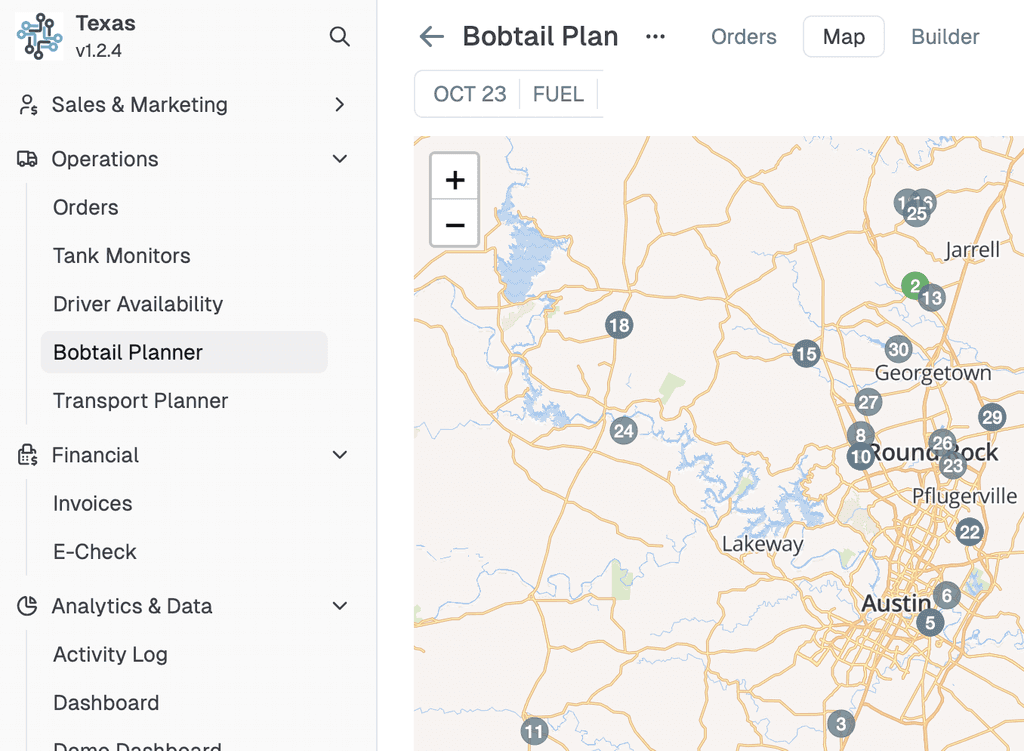Business
May 10, 2024
How business management app is reshaping the future of work.
Heading 3
Not long ago, I observed an experiment: on a Friday in Atlanta, a home health agency’s scheduling staff of 2 spent over 16 person-hours working to assign 130 weekend visits for Saturday. At the end of a long day, the schedulers had assigned 100 visits, leaving 30 missed or pushed to the following week. It was the best they could do. The schedule of 100 visits would require 1,292 miles to be driven by staff.
Home Health Nurse Preparing for Home Visit
Next, the same set of unassigned visits was loaded into a location-aware home health scheduling software program. The data set included all of the patient preferences (gender, language, you name it), required specialties (OT, ST, SW, RN, LVN, wound care, etc.), clinical staff and their credentials, and any other worker preferences (working hours, breaks, etc).
The location-aware home health scheduling software not only assigned all 130 visits with a button click (5-minute runtime), it actually reduced total mileage to 1,094 miles: 15% less mileage while providing 30% more visits.
The operational outcomes were summarized for executive management in this way:
● Zero unassigned/pushed visits for the weekend
● 100% of patient and staff requirements and preferences were satisfied
● 30% increase in capacity with 15% decrease in mileage
● 95% reduction in home health agency scheduling effort
Actual Outcome of AI-Enabled Location-Aware Home Health Scheduling Software Experiment
Beyond the obvious operational benefits, I was struck by the broader industry picture: staffing. Most experts recognize that any solution to the home care staffing problem must be multi-faceted. Ideas range from better pay to inexpensive/accessible training, and gig apps for freelancers, among many others. But the missing piece of this puzzle is one component that makes all the other pieces work together more efficiently: Logistics.
The Promise of Logistics
For many people, the word “logistics” summons images of Amazon, FedEx, or cross-country semi-trailers. In the context of home health, however, many agencies have taken advantage of optimized “Google” route mapping as a first step toward better efficiency. While daily route optimization is an improvement, it is only a “baby step” along the road to organizational efficiency. The big, hairy problem needing a solution is actually scheduling.
Also, to be clear, I’m not talking about simply matching patient preferences and caregiver attributes to select a compatible assignment for each visit. Many of today’s EHR applications can do just that. I’m talking about location-aware home health scheduling software — not only which clinician and patient match but which compatible matched pairs are the geographic best options to choose from. I’m talking about visualizing in real-time, what is the cost of accepting each new referral; knowing which clinicians can accommodate a new patient and how far they would have to drive. It is now possible to make such decisions via a data-driven methodology before the referral source hangs up the phone — knowing that you have made a wise decision both for your agency and for the new patient.
Even more mind-blowing, location-aware home health scheduling software can look at your unassigned visits for tomorrow or even for next week, and recommend an assignment schedule for your entire patient census that will significantly expand your capacity while cutting your mileage expense at the same time.
The science of logistics has come a long way in the 40 years since FedEx and other providers pioneered package delivery algorithms!
See Also: Don’t Confuse an Optimized Home Health ROUTE with an Optimized Home Health SCHEDULE
Other Positive Outcomes of Logistics
In addition to the direct operational benefits of logistics, additional benefits accrue as well:
1. Reduce the impact of the labor shortage on your agency
Agencies that adopt location-aware home health scheduling software can minimize the impact of the industry labor shortage. By reducing staff drive time, agencies can empower their existing workers to perform more visits or spend more time with patients or recordkeeping. In addition, nearly all of an agency’s scheduling staff can be reassigned to other duties.
2. Improve staff retention and enhance their lives
When agency workers spend less time driving and more time caring for patients and finishing documentation in a timely way, a funny thing happens: caregiver job satisfaction increases. Since workers are now far more productive than before, they can be rewarded with higher wages.
3. Improve funders’ return on investment
Significantly cutting drive time also cuts mileage costs by a similar amount. Those savings drop straight to the bottom line. Whether an agency is funded by foundations, the capital markets, or individual investors, the ability to deliver more services with the same staffing levels and reduced mileage cost makes the agency more capital efficient.
4. Save the planet
We all have a responsibility to reduce our contributions to climate change. No matter whether an agency uses electric motors or fossil fuel engines, cutting mileage by 30–50% also cuts resource consumption. For agencies using internal combustion engines, location-aware home health scheduling software generates a significant reduction in carbon footprint and CO2 emissions.
5. Be a better part of the solution to help our aging population age gracefully at home
By using location-aware home health scheduling software, home health agencies can become thought leaders and heroes for our aging population. The technology benefits our communities by expanding systemic capacity and reducing denials and time patients spend waiting for care.



